Abstract
The effect of CN− and N2 on the electrical membrane potential (Em) was compared with that of CN− on the ATP levels in cotyledons of Gossypium hirsutum and in Lemna gibba L. In mature cotton tissue, CN− depolarized Em to the energy-independent diffusion potential (ED) in the dark. In the light Em recovered transiently. The same was observed in leaves of Nicotiana, Avena, Impatiens, Kalanchoë, and in Lemna. In contrast, in young cotton cotyledons and tobacco leaves and, to a large extent, in +sucrose-grown Lemna, Em was depolarized to ED also in the light in a similar way as in the dark.
In Lemna grown without sucrose, the energy-dependent component of Em was only partially depolarized by CN− in dark or light. Cyanide plus salicylhydroxamic acid completely reduced Em to ED, abolished respiration and photosynthesis, and severely diminished the ATP level. This suggests the operation of a CN−-insensitive respiration in uninjured Lemna. The initial CN−-induced decay of the ATP level in cotton and Lemna was more rapid than the decay of Em. CN−-induced oscillations of the ATP level were followed by similar but slower oscillations of Em. This supports the view of a general dependence of Em on ATP. Discrepancies between inhibitor-induced changes of Em and ATP levels are suggested to result from additional regulation of Em by the cytoplasmatic pH value.
A comparison of ED in young and mature cotton cotyledons in the dark and in the light suggests that in growing young cotyledons the different effect of CN− in the light is due to a less effective photosynthesis together with high mitochondrial respiration. In Lemna and in mature cotton tissue, Em in the light is maintained by noncyclic photophosphorylation and photosystem II, which is only partly inhibited by CN−, thus resulting in an incomplete depolarization and recovery of Em. Complete inhibition of photosynthetic O2 evolution and membrane depolarization by CN− plus salicylhydroxamic acid are suggested to result from photooxidation.
Full text
PDF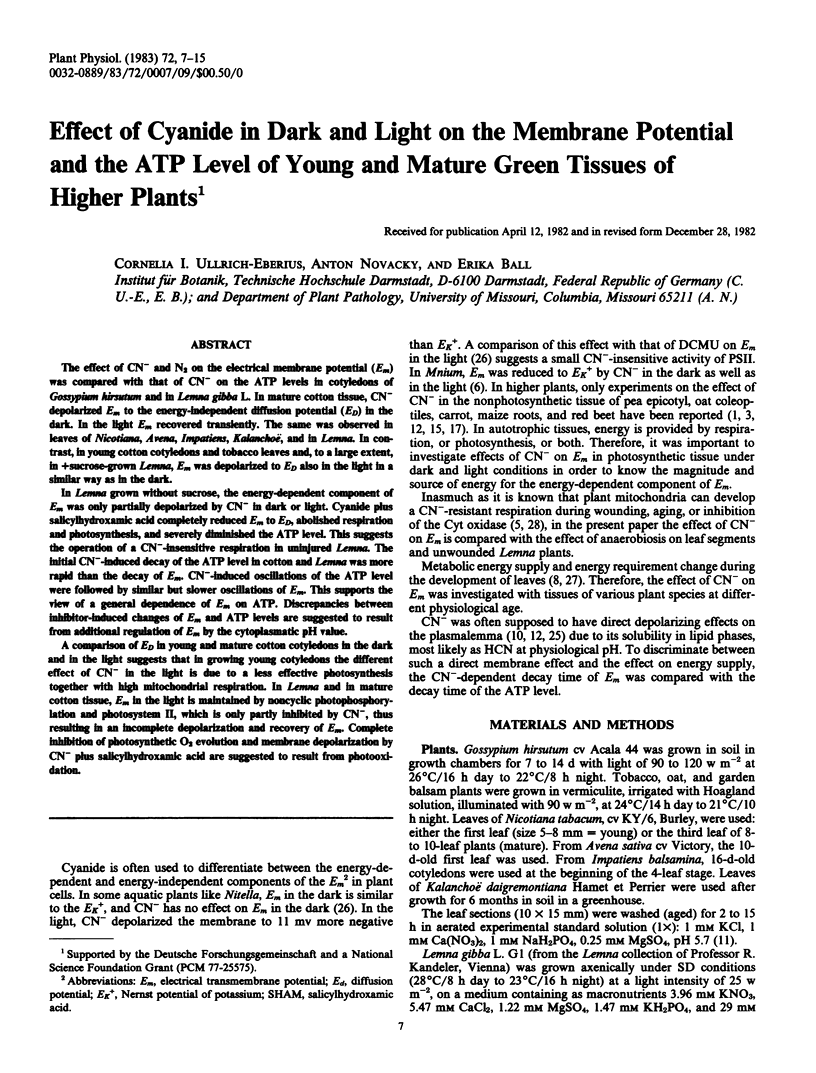
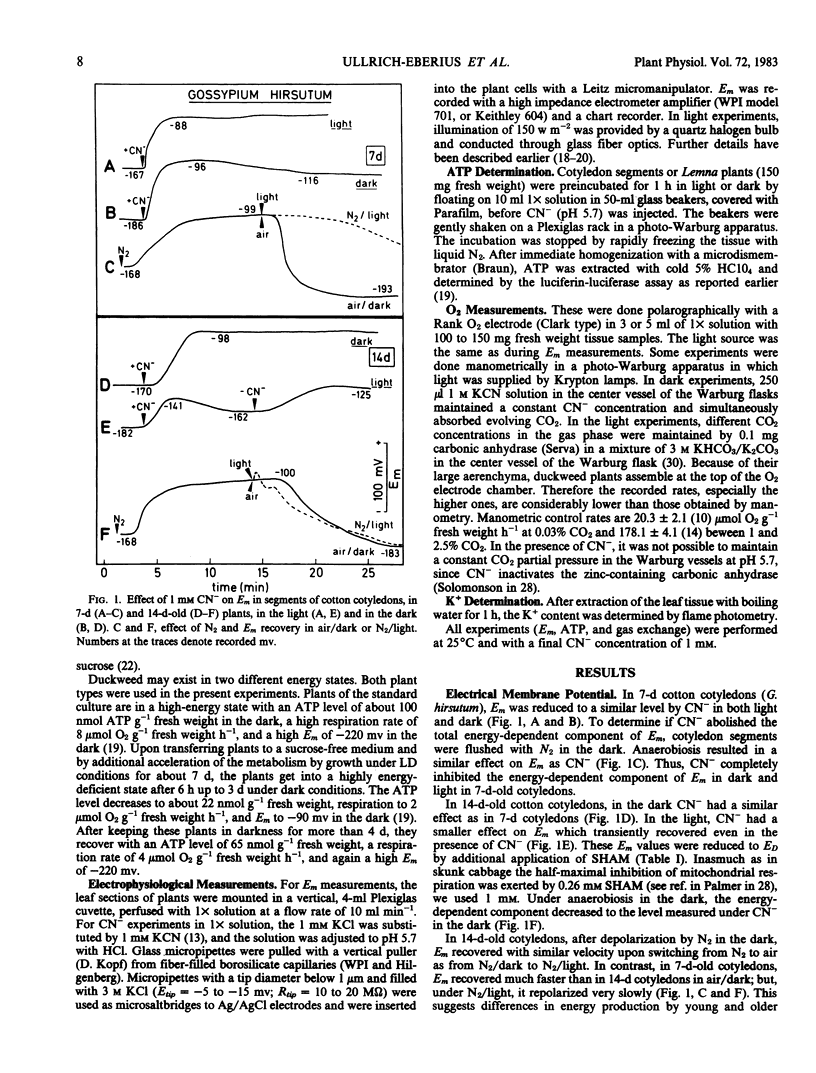
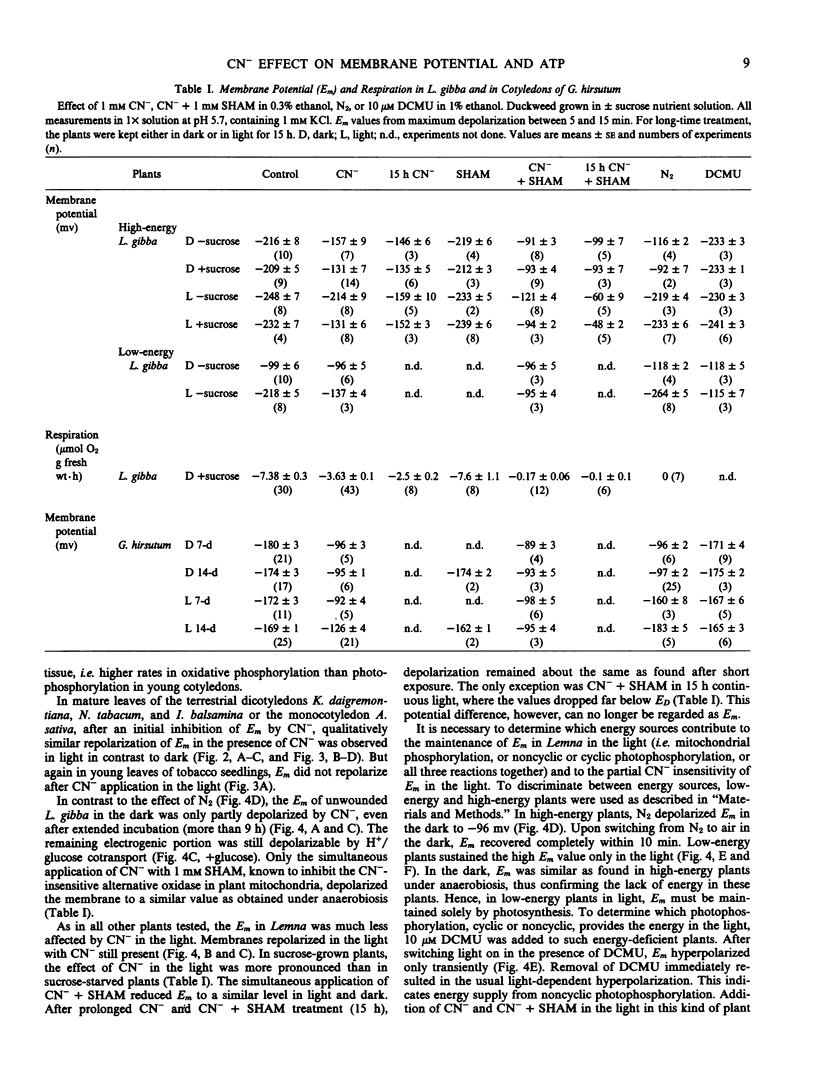
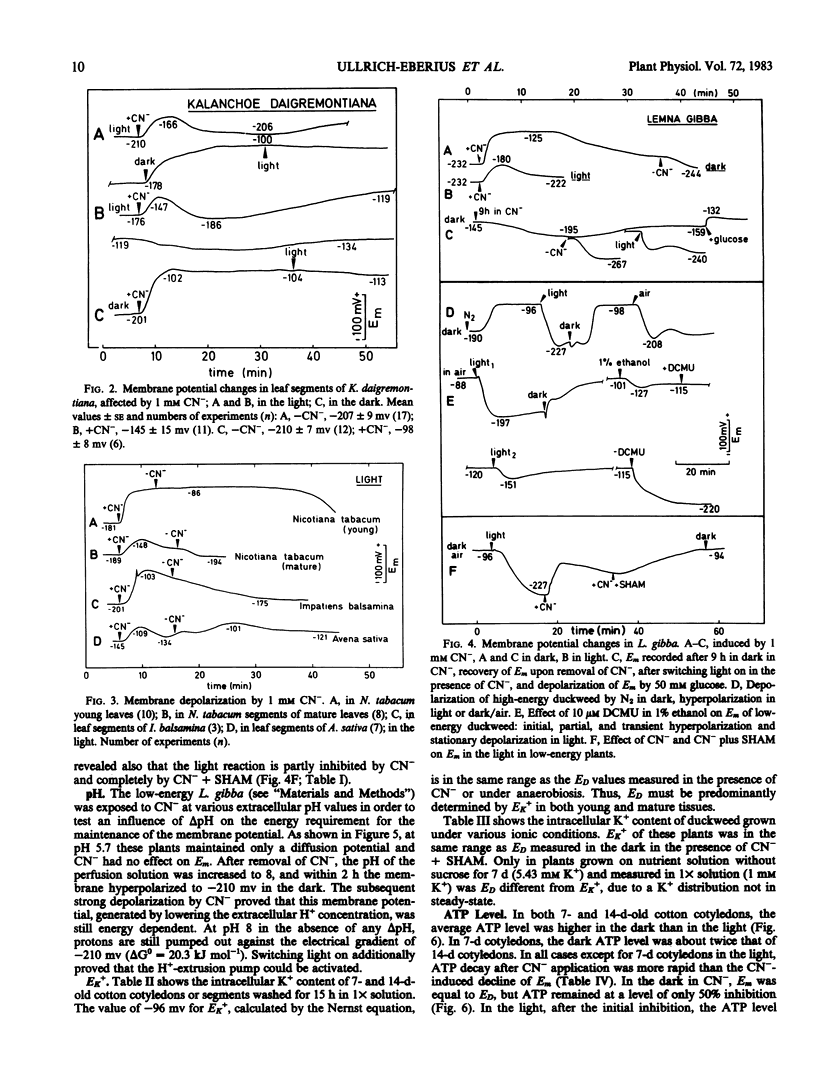
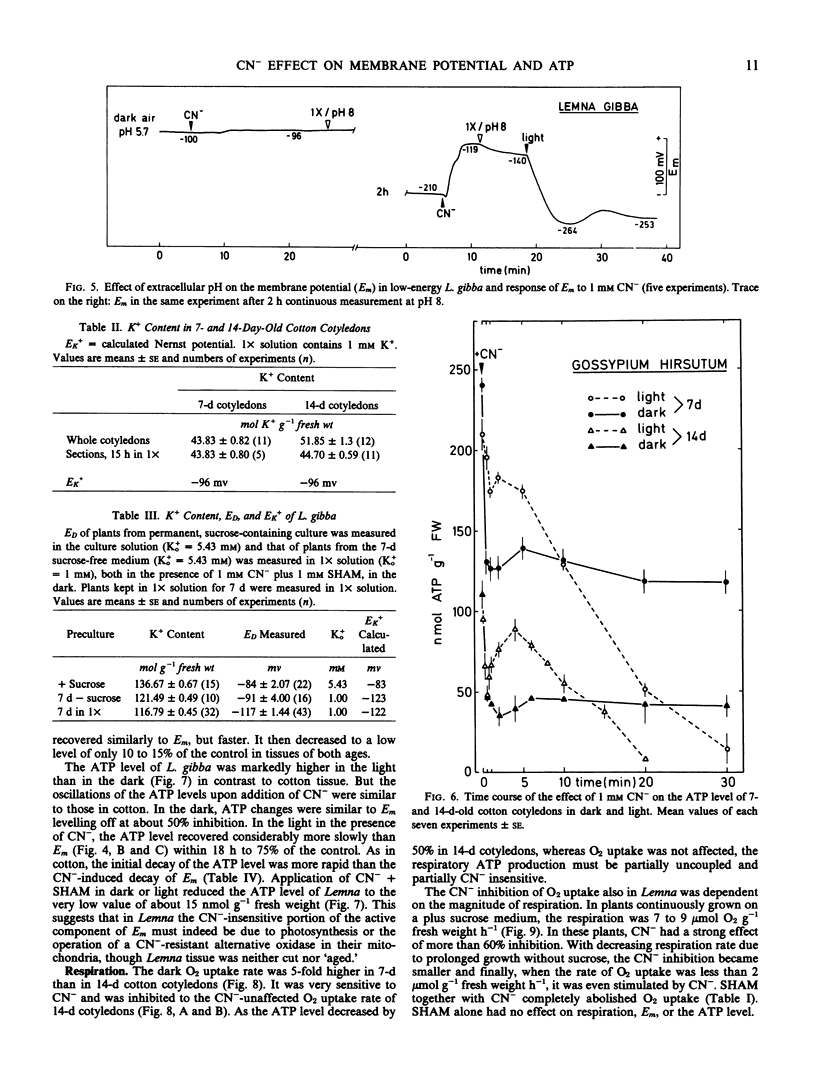
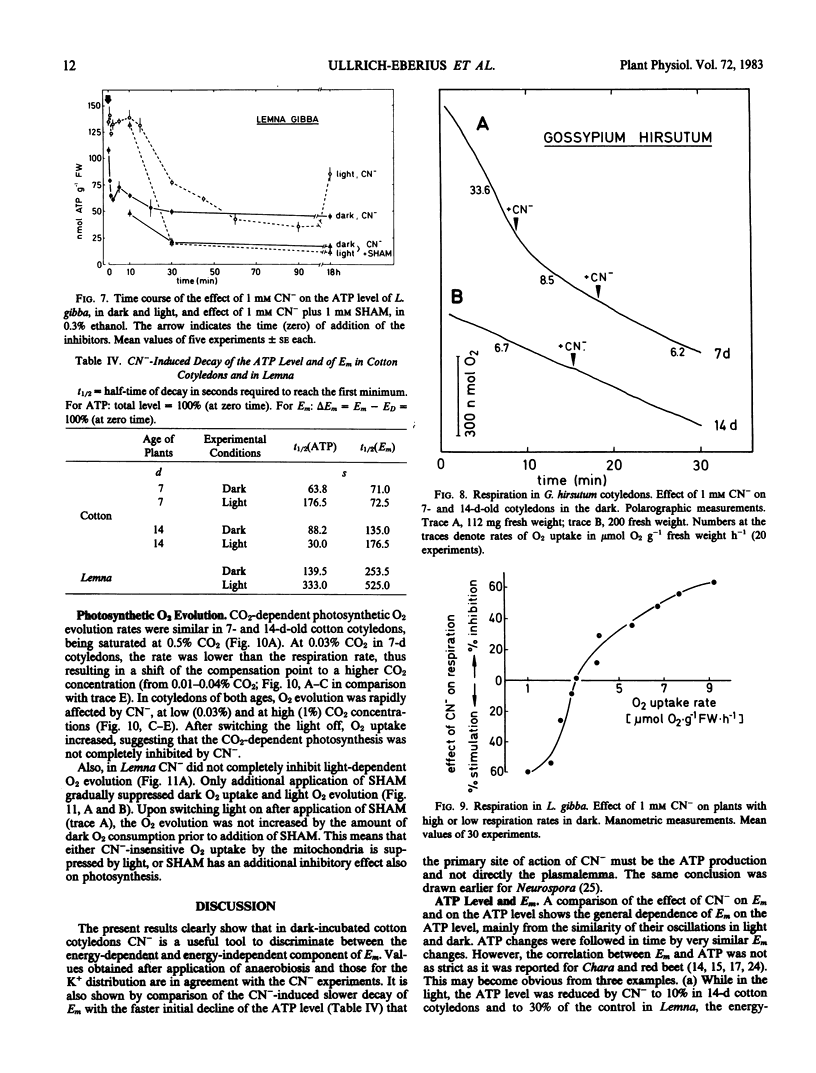
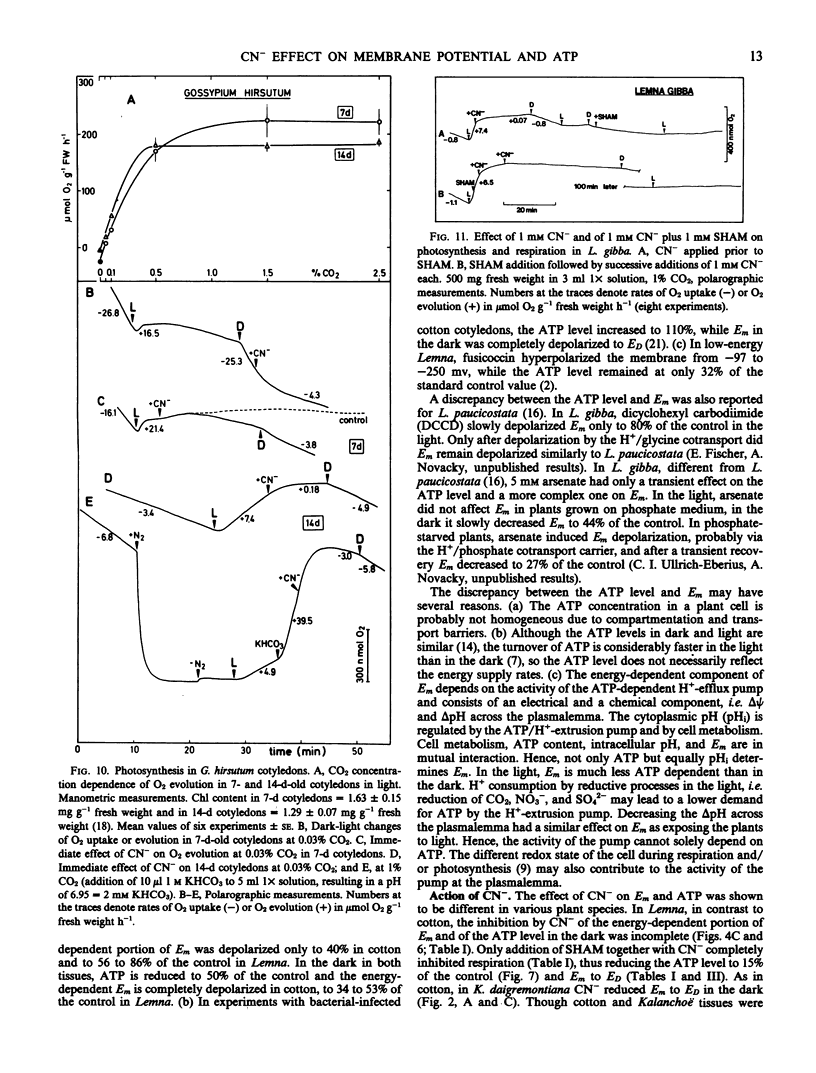
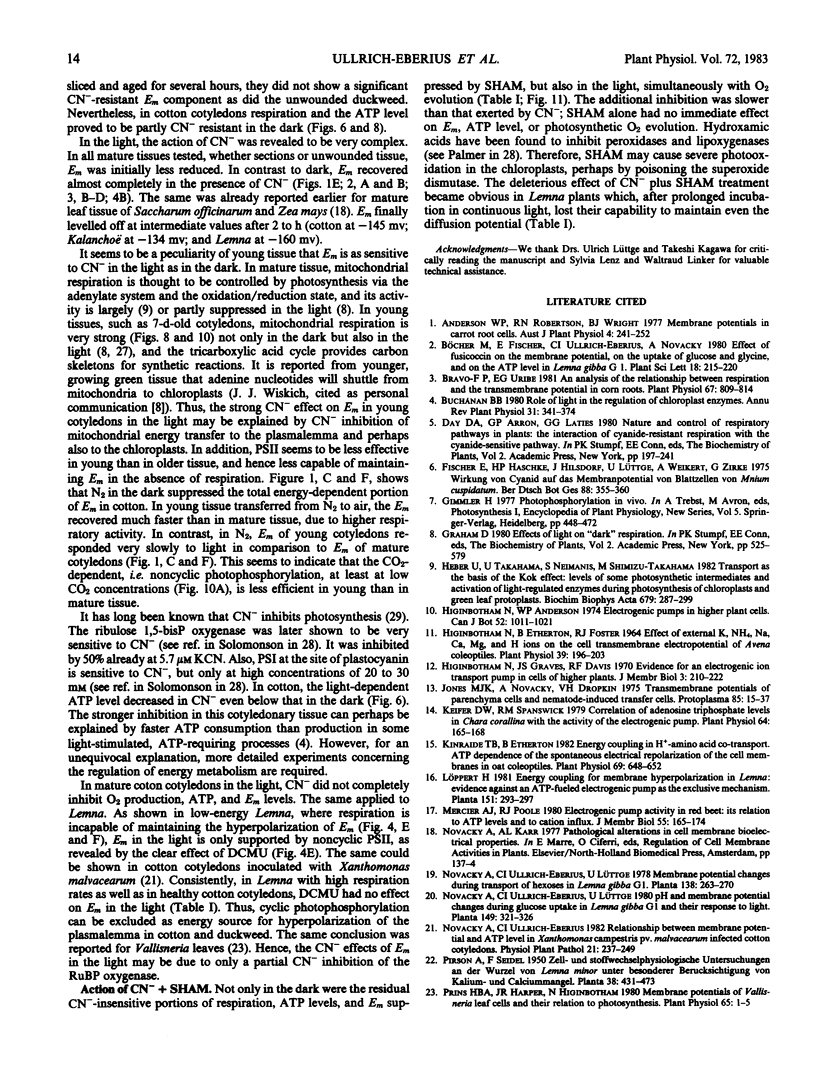

Selected References
These references are in PubMed. This may not be the complete list of references from this article.
- Bravo-F P., Uribe E. G. An Analysis of the Relationship between Respiration and the Transmembrane Potential in Corn Roots. Plant Physiol. 1981 Apr;67(4):809–814. doi: 10.1104/pp.67.4.809. [DOI] [PMC free article] [PubMed] [Google Scholar]
- Higinbotham N., Etherton B., Foster R. J. Effect of External K, NH(4), Na, Ca, Mg, and H Ions on the Cell Transmembrane Electropotential of Avena Coleoptile. Plant Physiol. 1964 Mar;39(2):196–203. doi: 10.1104/pp.39.2.196. [DOI] [PMC free article] [PubMed] [Google Scholar]
- Keifer D. W., Spanswick R. M. Correlation of Adenosine Triphosphate Levels in Chara corallina with the Activity of the Electrogenic Pump. Plant Physiol. 1979 Aug;64(2):165–168. doi: 10.1104/pp.64.2.165. [DOI] [PMC free article] [PubMed] [Google Scholar]
- Kinraide T. B., Etherton B. Energy Coupling in H-Amino Acid Cotransport : ATP DEPENDENCE OF THE SPONTANEOUS ELECTRICAL REPOLARIZATION OF THE CELL MEMBRANES IN OAT COLEOPTILES. Plant Physiol. 1982 Mar;69(3):648–652. doi: 10.1104/pp.69.3.648. [DOI] [PMC free article] [PubMed] [Google Scholar]
- Slayman C. L., Long W. S., Lu C. Y. The relationship between ATP and an electrogenic pump in the plasma membrane of Neurospora crassa. J Membr Biol. 1973;14(4):305–338. doi: 10.1007/BF01868083. [DOI] [PubMed] [Google Scholar]


